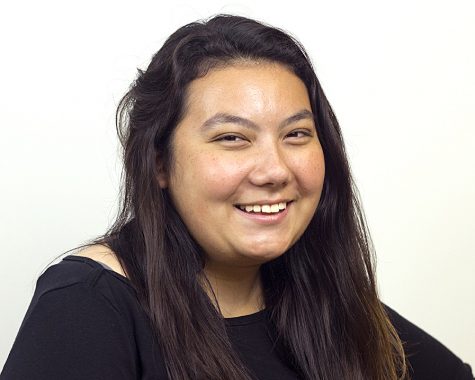Marketing workgroup talks communication
October 20, 2016
Workgroup No. 6, charged with marketing and university branding, talked about communicating throughout marketing areas effectively with the resources they have at their meeting Wednesday.
Communication studies professor Chigozirim Utah said some ideas they had previously are bound by resources.
Christy Kilgore, assistant director of Marketing and Creative Services, said if the university could spend very little to recruit more students, it would be awesome, but typically, institutions have to spend more to recruit more students.
Workgroup chair Richard Flight said there is a strong correlation between dollars spent and sales.
“Not to give a dollar amount, because I don’t think that is not the spirit of what we are doing especially in the environment we are in,” Flight said.
However, he said he does not think it would be unfair to use a comparative budgeting approach where we take an average of our peer institutions and match what they spend per student recruited or as an overall budget or as an overall budget staffing levels.
Flight said this could be one budgeting philosophy of many.
Kilgore said one thing that could make the biggest difference considering the area is resource-bound is the restructuring of the department.
“It would be easier now because we have fewer people,” she said. “It’s sad, but it’s true.”
She brought up the idea of having the Admissions Office, Web Team, and Marketing and Creative Services under one unit.
Currently, the Web Team is a part of Center for Academic Technology and Support, which reports to John Henderson, assistant vice president for academic affairs for technology, and then to Provost Blair Lord, Kilgore said.
The Admissions Office reports to Lord. Marketing and Creative Services used to report to the vice president of university advancement when there was one still in place. The vice president of university advancement would then report to the president.
Though all the people involved are good at communicating with each other, a structure under one unit would take away many barriers, Kilgore said.
“There is value in being on the same team,” Kilgore said. “We’d have a clearer idea of how to grow people. It could be big, make a difference and could be implemented.”
Flight said when the departments are separated and their goals are not aligned, there could be conflict between departments.
“For instance, if enrollment identifies a group of potential students, marketing can position a message directly to that group of potential students,” Flight said. “They can work better together.”
Kilgore said some people do not realize people who work in different offices do work that is somewhat related, and it could make it harder to send the right person to get things done.
“We don’t want to ask you to do so much footwork, asking this person and asking this person and asking this person for this thing,” Kilgore said. “So to have this centralized better for a person working in a group would be better for the people we’re trying to serve.”
Flight said this could deal more with efficiency rather than spending money.
Utah said structural issues are the foundation for everything, so if the group can figure out how to map the progressions starting from places being structured, they can lay the foundation for other plans to happen.
“It would be very clear to read and understand as recommendations,” Utah said.
Utah suggested informal channels be used when communicating that would not necessarily be a social gathering and could be a communication channel that is not part of the actual regulations of the university or organization.
Jeremy Alexander, interim associate director of Housing and Dining, said for instance, though he reports to Mark Hudson, director of Housing and Dining, he can still listen to what Kilgore says to do regarding what Eastern’s style, pictures and layout is in regards to marketing as they are both part of the university as a whole.
Cassie Buchman can be reached at 581-2812 or cjbuchman@eiu.edu.




































































